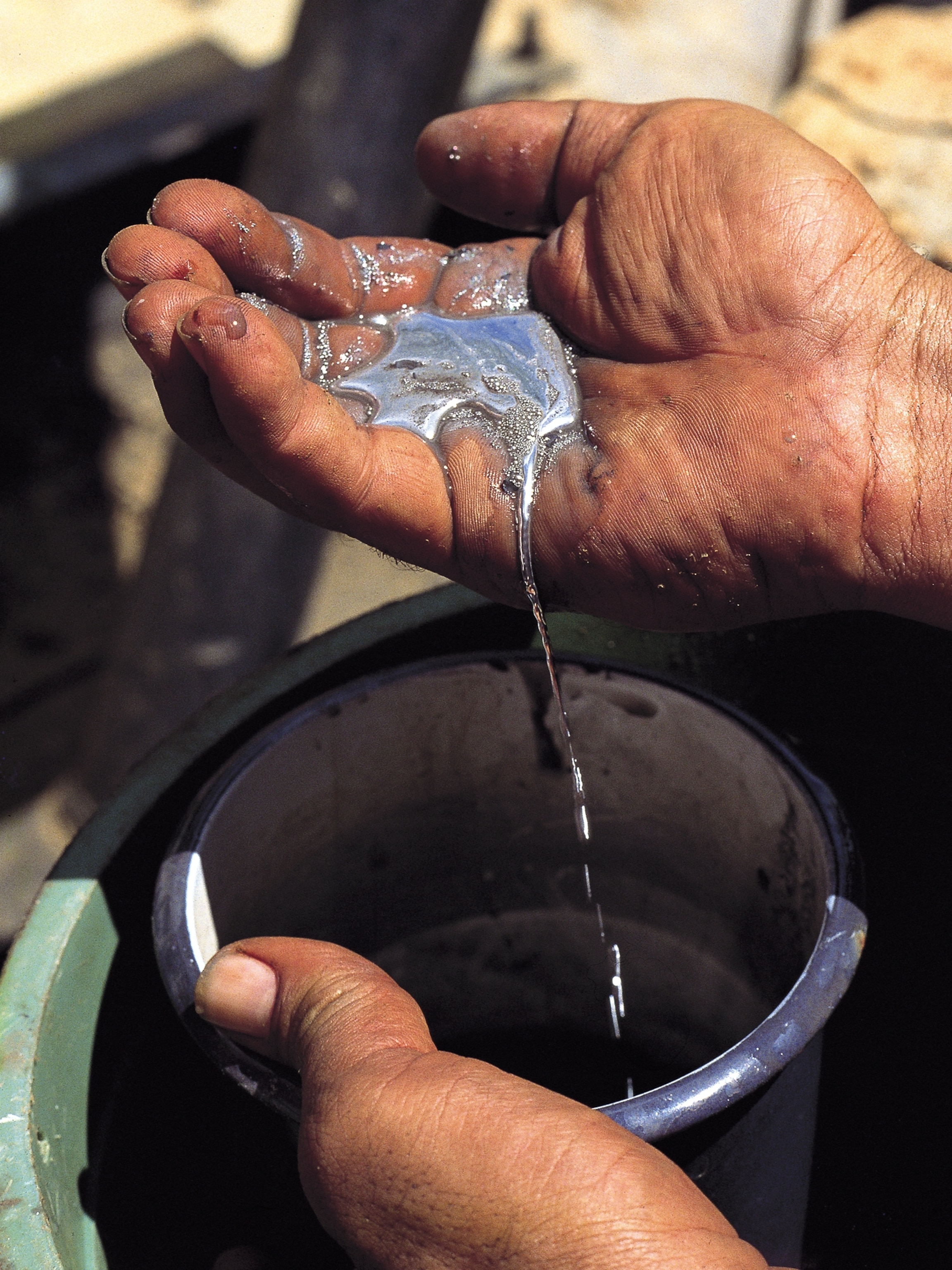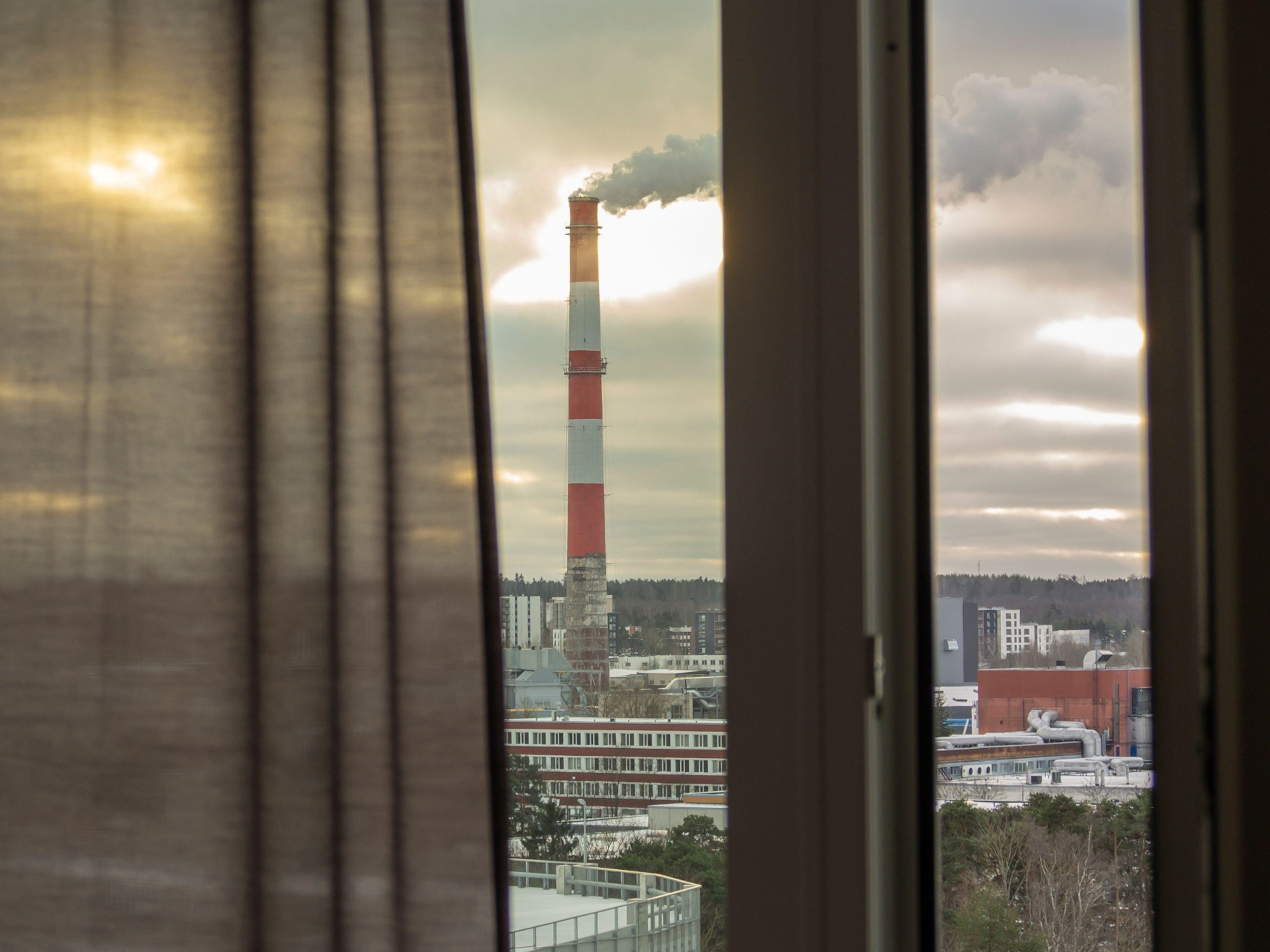
Can International Mercury Treaty Cut Poison Risk?
UN’s Minimata Treaty aims to end mercury use within 30 years.
Much of the world agrees that mercury contamination is a major public and environmental health concern, and nearly a hundred nations have proven it by signing the United Nations' Minamata Convention on Mercury. But experts say the devil may lie in the details and add that reducing mercury use and environmental levels won't be a quick process.
"Essentially, what we have managed to do is to persuade the international community to send a very clear signal—the use of mercury in industrial processes, in cosmetics, in medical equipment, is essentially over," Achim Steiner, executive director of the United Nations Environment Program, told the press in Geneva last week. "It doesn't mean that all mercury will disappear tomorrow," he added, instead predicting a 30-year phase-out period.
Mercury is a naturally occurring metal. Unfortunately, human beings have introduced it into ecosystems at unnatural levels and the consequences of exposure can be serious.
The elemental, metallic form of mercury has negative health effects primarily when it's inhaled as a vapor by users like miners, or after it's spilled or released from products that contain this form. Other forms of mercury are not only poisonous but more persistent.
In oceans, freshwater, or soil biochemical and bacterial processes can transform elemental mercury (Hg) into methylmercury (MeHg). Methylmercury absorbs into the body much more easily than inorganic mercury, breaks through the body's normal barriers to toxins, and remains in the body far longer than elemental mercury.
This form of mercury accumulates in living organisms beginning at the foot of a food chain with plants, plankton, or other small organisms that passively absorb it. Each time a larger animal eats these species, and is in turn eaten, mercury levels add up and migrate to the top of the food chain through a process called biomagnification.
The process puts top-level animals like predatory fish—or people who eat them—at highest risk for exposure. (See National Geographic's Seafood Decision Guide for more info on fish and mercury.)
In humans, mercury compromises the central nervous system, kidneys, and brain. Besides those who work directly with mercury, pregnant women and young children are at the highest risk. No safe threshold for mercury consumption has been established by the World Health Organization. The long-term environmental impacts and damage of mercury contamination on ecosystems aren't completely understood. (Related: "Mercury Poisoning Makes Birds Act Homosexual.")
Minamata—From Past Disaster to Mercury-Free Future
The dangers of mercury can be dramatic. To highlight that fact, treaty signatories gathered in Minamata, Japan, site of the most deadly mercury poisoning in world history.
In 1932 the Chisso Chemical Plant there began discharging waste methylmercury directly into the sea.
By the mid-1950s citizens of fishing and coastal communities around Minamata suffered convulsions, crippled hands and feet, loss of balance, fits of screaming, and damage to sight, speech, and hearing. In some cases paralysis and death followed. Unborn children were also poisoned in the wombs of exposed mothers by the condition soon coined "minamata disease."
Scrap-eating cats helped make the link to poisonous seafood clear, by feasting on fish and then wobbling and tilting about before dying in what was dubbed "cat dancing." Death of these cats, as well as fish and birds, helped scientists pinpoint the cause of human ailments, but the process was a lengthy one.
Japan's government didn't acknowledge that the factory's methylmercury caused the disease until 1968, and Chisso only accepted responsibility after losing a 1973 lawsuit brought by victims. Since then the Japanese government has certified about 3,000 patients and gives medical aid to over 10,000 others who exhibit conditions like sensory disorders.
More than 1,700 Minamata victims have died, though not all may be attributable solely to the mercury poisoning. Even today legal wrangling continues with actions filed by people hoping to be certified as victims and receive compensation.
The Treaty's Scope and Exemptions
The treaty signed in this same city will take aim at cleaning industrial air emissions, banning and mothballing mercury mines, and regulating the small-scale gold miners who use the element. The production, import, or export of many mercury-containing products will also be banned by 2020. That list includes mercury in electrical switches and relays, most batteries, many lamps and bulbs, medical items like thermometers and blood pressure devices, and many cosmetics and soaps.
The exemption of mascara in particular has attracted media attention, but the convention states that its "intention is not to cover cosmetics, soaps, or creams with trace contaminants of mercury" and argues that "no effective safe substitute alternatives are available."
Dental fillings also escape an outright ban, but the treaty stresses the reduction of their use by promoting better oral health, so that fewer fillings are required, and developing more non-mercury alternatives when they are required.
Susan Keane, an environmental analyst with the Natural Resources Defense Council (NRDC), called the treaty a "huge step." She said, "I think it's pretty miraculous that in an age of discord we're able to get a global agreement on an environmental issue. I think that shows how widely it's accepted that mercury is a problem and that there are concrete things that can be done about it." (NRDC fights mercury pollution with the Zero Mercury Working Group, a coalition of NGOs from 54 countries working to eliminate mercury use.)
The effort was not unanimous, as Russia and India remain notable nonsigners, but there is hope that they and other nations will soon join the effort. The United States was set to sign the convention but its representatives were recalled because of the federal government shutdown and so must sign at a later date.
Under the terms of the convention, now adopted as international law, signing nations must now ratify the treaty and enact their own domestic mercury reduction laws. That process may take several years. When 50 nations have made good on their commitments, and ratified the convention, it will enter into force.
Where Mercury Comes From
While much anti-mercury focus is locked on power plants and other large industrial sources, Keane said that research in recent years has shown another major and more surprising culprit—artisanal and small-scale gold mining. In fact, she stressed, UNEP's 2013 Global Mercury Assessment actually named this mining as the world's largest source of human-generated mercury emissions, ahead of coal-burning power plants, though it was barely mentioned in the previous (2002) version of the same study due to lack of information. While individual operations may be small this type of mining is practiced by millions of individuals around the world.
Miners use mercury to separate and retrieve gold from rock and sediment, a practice addressed by its own article in the new treaty requiring countries with such mercury use to reduce or eliminate it. "It's not a voluntary provision, as has been reported," Keane said. "It's a mandatory provision. If you have mercury use in small-scale gold mining you have to do something about it."
Exactly what countries do to get mercury out of their mining will be up to each of them and will often pose a considerable challenge.
"This mining is often unregulated, it's often in very remote areas, so the concept of a single approach wasn't feasible," Keane explained. "Each country has to declare its own actions and set reduction targets. So I think there is going to be quite a lot of action in that sector, and in fact there already is. In this area I think the treaty [several years in the making] has already made a difference and will continue to make a difference."
(Related: The mining of mercury in the Andes and its pollution date back to at least 1400 B.C.)
University of Michigan environmental scientist Joel Blum and his team recently produced a study showing how methylmercury may be forming deep in the Pacific Ocean after being emitted from the world's other major mercury source—coal-burning power plants. Coal naturally contains a small concentration of mercury, which gets sent up the smokestack as the fuel is burned. (Related: "The Transporter: Cloud Banks Carry Mercury.")
The smokestack pollution travels thousands of miles to sea, Blum found, and falls as rain, depositing elemental mercury. That element gets transformed to methylmercury by bacteria housed on tiny bits of organic matter that sink into the deep.
"In the Pacific," Blum said, "the big sources are coming from Asia and the ever-increasing coal combustion going on there that produces mercury that makes its way into the marine food web."
"This reinforces the global nature of the problem," he added, "when it's clear that emissions from burning coal on the Asian continent are affecting the fisheries that are important to countries around the Pacific Rim."
Blum called the treaty a great first step for raising awareness on the global mercury problem, but the challenge will be converting good intentions to tangible results on the ground. "At this point [it's not] much more than a hope that we're starting to move in the right direction," he cautioned. "But I hope we'll look back on this as a watershed moment at the beginning of a process to reduce the emissions of mercury."
The treaty may have more immediate benefits for people with occupational exposure to mercury, Keane added, like miners or industrial workers and their communities. But while every cut to mercury use and emissions is a step in the right direction, she said, the legacy of mercury use will be with us for the long term.
"People may have an expectation that the treaty goes into effect and boom you'll see less mercury in the environment," she said. "Locally, near a plant with reduced emissions, that will probably be true. But it will probably take a long time before we see a huge global drop in ambient concentrations of mercury."








